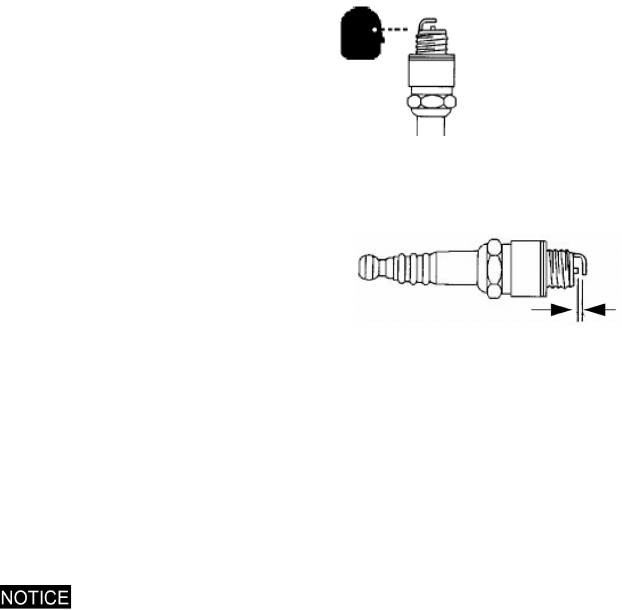
54
MAINTENANCE
Spark Plug
Spark Plug Inspection and Replacement
3. Clean any dirt from around the base of the spark plug.
4. Using the provided park plug wrench (B), remove the spark plug.
5. Inspect the electrode for wear
and carbon buildup. Look for a
sharp outer edge with no
rounding or erosion of the
electrode.
6. Inspect spark plug. Replace if electrodes are worn or if insulator is
cracked, chipped, or fouled.
7. Clean the spark plug with a wire brush if it is to be reused.
8. Using a wire-type feeler gauge,
measure the spark plug
electrode gap. If necessary,
correct the gap by carefully
bending the side electrode. The
gap should be 0.028-0.031in
(0.7-0.8mm). Correct as
necessary by carefully bending
the side electrode.
9. Ensure the spark plug sealing washer is in good condition and
thread the spark plug in by hand to prevent cross-threading.
10. After a new spark plug has been seated by hand, it should be
tightened 1/2 turn with a wrench to compress the sealing washer. If
a used plug is being reinstalled, it should only require 1/8 to 1/4 turn
after being seated.
A loose spark plug can overheat and damage the engine. Over tightening
the spark plug can damage the plug threads.
Never use a spark plug with an improper heat range.
11. Re-install the spark plug cap and close the service door.
Inspect electrode
for wear and
buildup
Spark plug gap


















